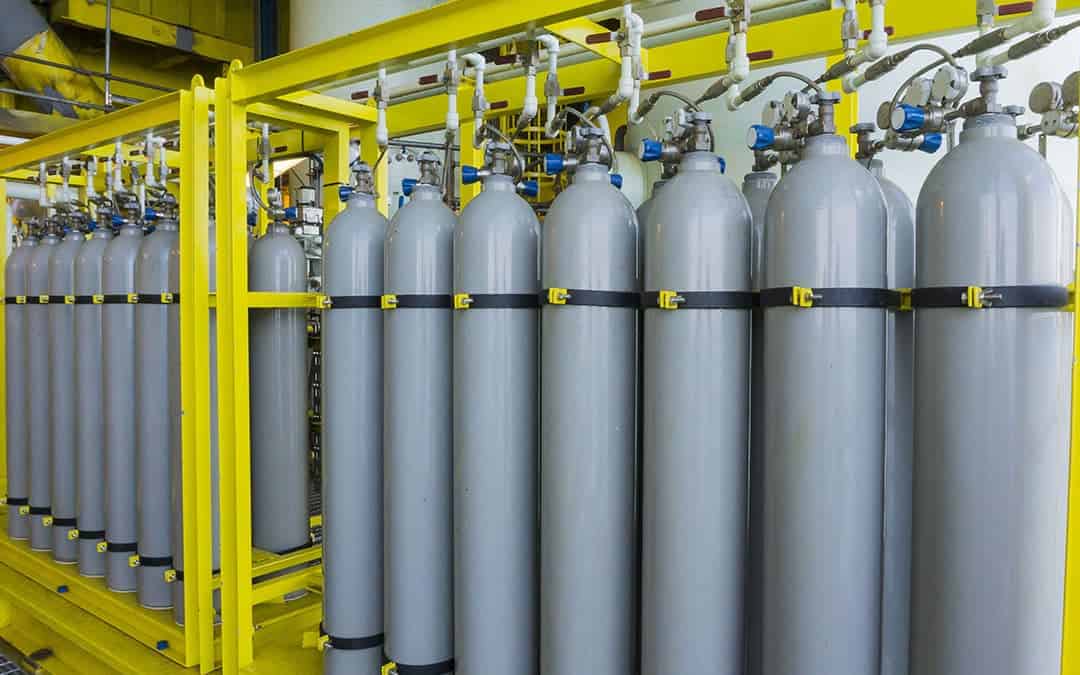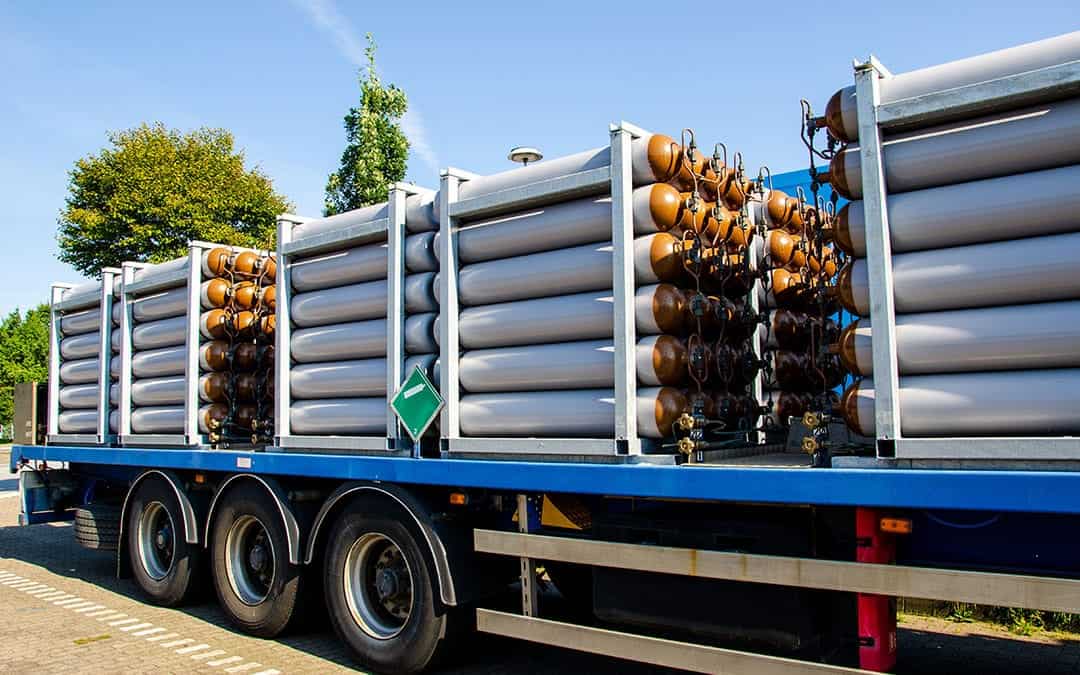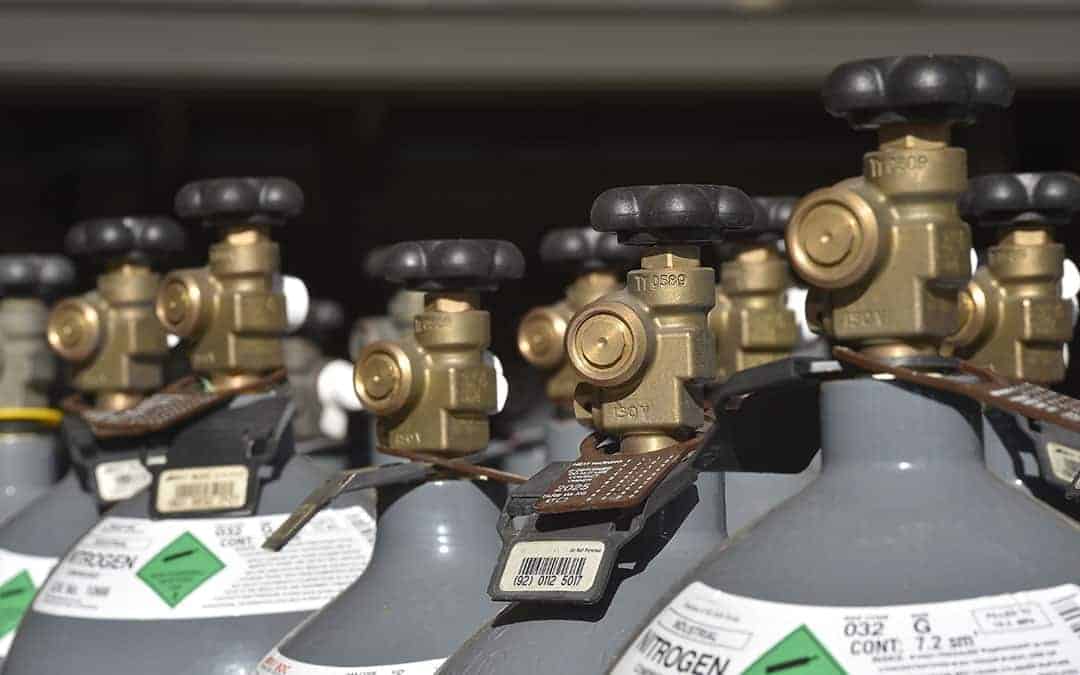Ensuring the safe handling and storage of nitrogen gas cylinders is essential for maintaining a secure work environment and preventing accidents. Nitrogen gas, with its wide-ranging applications across industries such as food preservation, electronics manufacturing, and healthcare, requires careful management to avoid potential hazards. In this blog, we will delve into the best practices for handling, storing, and transporting nitrogen gas cylinders, highlighting the importance of adhering to safety guidelines to ensure the wellbeing of everyone involved.
Handling Nitrogen Gas Cylinders

Just as nitrogen gas preserves food quality, proper handling preserves the safety of personnel and equipment. To ensure safe handling:
- Train all staff in correct procedures and potential hazards
- Equip personnel with proper PPE (safety glasses, gloves, protective footwear)
- Use cylinder carts or trolleys for transportation
Treat cylinders with the same care as delicate electronic components. Remember, gentle handling prevents damage and ensures the cylinder’s integrity, much like how nitrogen prevents oxidation in electronics manufacturing.
Storing Nitrogen Gas Cylinders
Proper storage of nitrogen cylinders is as important as the controlled environments nitrogen creates in electronics manufacturing. For safe storage:
- Keep cylinders in well-ventilated, dry, and cool areas
- Store away from direct sunlight and heat sources
- Secure cylinders upright with chains or straps
- Separate nitrogen cylinders from flammable materials and incompatible substances
Clear labeling is essential, helping avoid confusion just as nitrogen helps maintain the purity of products in different industries.
Transporting Nitrogen Gas Cylinders

Transporting nitrogen cylinders safely requires attention to detail, similar to how nitrogen is used in precise medical applications. When transporting:
- Use vehicles designed for gas cylinder transport
- Ensure proper ventilation and secure positioning
- Allow sufficient space between cylinders to prevent collisions
- Follow loading and unloading procedures carefully
Use appropriate equipment like ramps or lifts when necessary, treating each cylinder with the same care as a critical component in a manufacturing process.
Emergency Procedures
Despite precautions, emergencies can occur. Having well-defined emergency procedures is as crucial as having nitrogen on hand for critical industrial processes. To prepare for emergencies:
- Train all personnel in emergency response, including evacuation plans and first aid
- Ensure easy access to emergency equipment (fire extinguishers, gas detectors, first aid kits)
- Establish clear protocols for reporting incidents
Maintaining these safety measures is just as important as how nitrogen maintains the quality of various products and processes.
Conclusion
Safe handling and storage of nitrogen gas cylinders are paramount across industries, from food preservation to healthcare. By following these protocols, businesses can ensure safety while harnessing the benefits of this versatile gas.
If your business requires high-purity nitrogen gases and guidance on safety protocols, CalOx is here to help. Contact us today to learn more about our services and how we can assist you in maintaining a safe and efficient workplace.
Conclusion
Safe handling and storage of nitrogen gas cylinders are paramount across industries, from food preservation to healthcare. By following these protocols, businesses can ensure safety while harnessing the benefits of this versatile gas.
If your business requires high-purity nitrogen gases and guidance on safety protocols, CalOx is here to help. Contact us today to learn more about our services and how we can assist you in maintaining a safe and efficient workplace.
